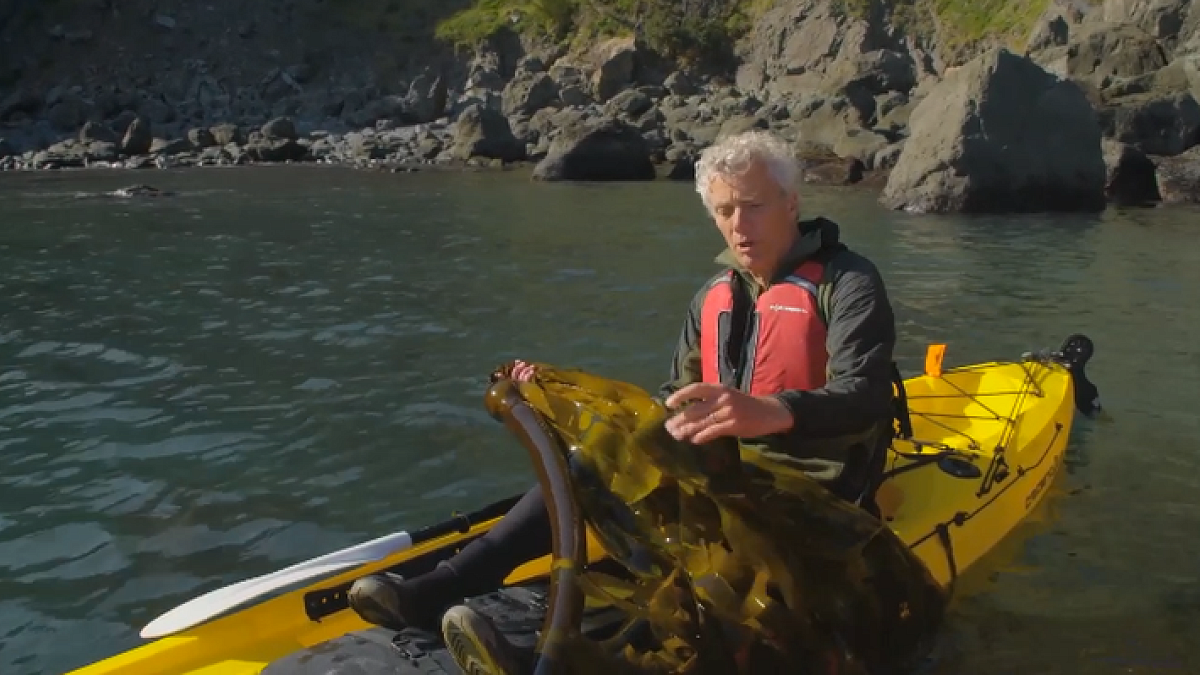Humans may have arrived in North America earlier than once thought and encountered previously unrecognized challenges, according to new climate research from an interdisciplinary team that includes scientists from the University of Oregon.
Jon Erlandson, an archaeologist and director of the UO Museum of Natural and Cultural History, is no stranger to research updating the understanding of early human migration to North America. Erlandson helped develop the “kelp highway” hypothesis, which proposed that the first Americans followed a Pacific Coast route from Northeast Asia to Beringia and the Pacific Northwest, using boats to navigate highly productive nearshore kelp-forest ecosystems.
“When the kelp highway was proposed, we thought the first Americans arrived between 16,000 and 14,000 years ago, when Beringia was relatively warm,” Erlandson said. “It is now more likely that humans moved into North America between 20,000 and 16,000 years ago, with colder climates and extensive winter sea ice.”
In a paper published in the Proceedings of the National Academy of Sciences on Feb. 6, Erlandson and his colleagues identify the two most likely migration windows as 24,500-22,000 years ago and 16,400-14,800 years ago. The research team also included scientists from the U.S. Geological Survey, Oregon State University, and Woods Hole Oceanographic Institution.
Those time windows had the most favorable climate conditions for coastal migration, including weak northward ocean currents to ease southward water travel; winter sea ice to bridge island gaps and facilitate coastal travel; ice-free summer water conditions to provide food and water travel; and areas of terrestrial refuge for the migrators.
The team used paleoclimate data and ran simulations to identify time periods between 30,000 and 10,000 years ago that met the criteria. Geochemical analyses determined times of likely winter sea ice and summer melting periods, while geological evidence of ice-rafted debris helped determine eras when huge glacial ice sheets retreated enough to provide terrestrial refuges along the coast.
The windows of favorable environmental conditions were correlated with existing archaeological and genetic data, resulting in the two most likely periods of migration. Archaeological and genetic evidence suggests the first humans arrived in North America between approximately 25,000 and 16,000 years ago.
The newly narrowed migration time ranges mean that instead of only summer sea travel along the kelp highway, as Erlandson once thought, “the First Americans had to be co-adapted to both winter sea ice and summer kelp forest habitats. It’s a much more interesting story now,” he said.
The UO and Museum of Natural and Cultural History archaeologists have been at the forefront of such research, including the dating of 14,000-year-old human feces, known as coprolites, and artifacts in Oregon’s Paisley Caves. Research on the peopling of the Americas is a focus area for the museum’s new Center for Archaeological and Interdisciplinary Research and Education, which studies historical ecology, human migrations and human responses to environmental change.
—By Becky Raines, Museum of Natural and Cultural History


